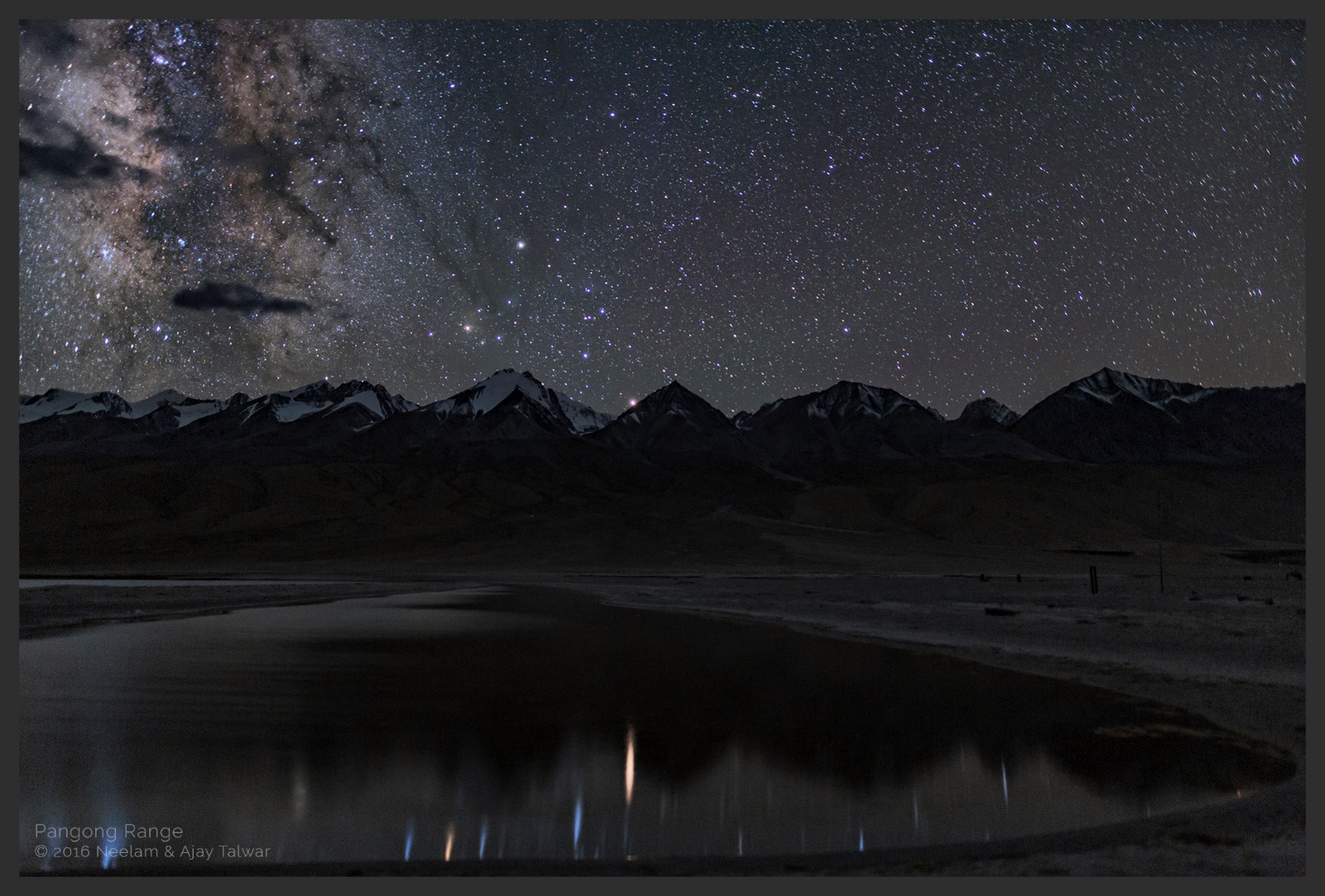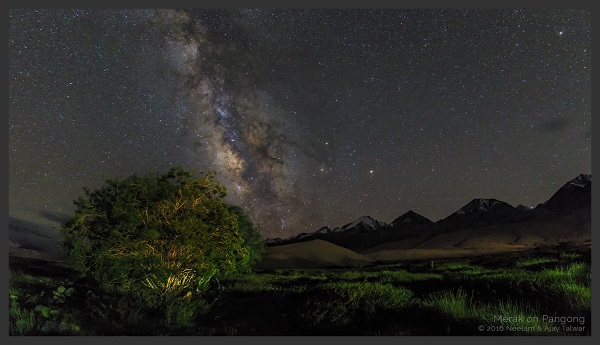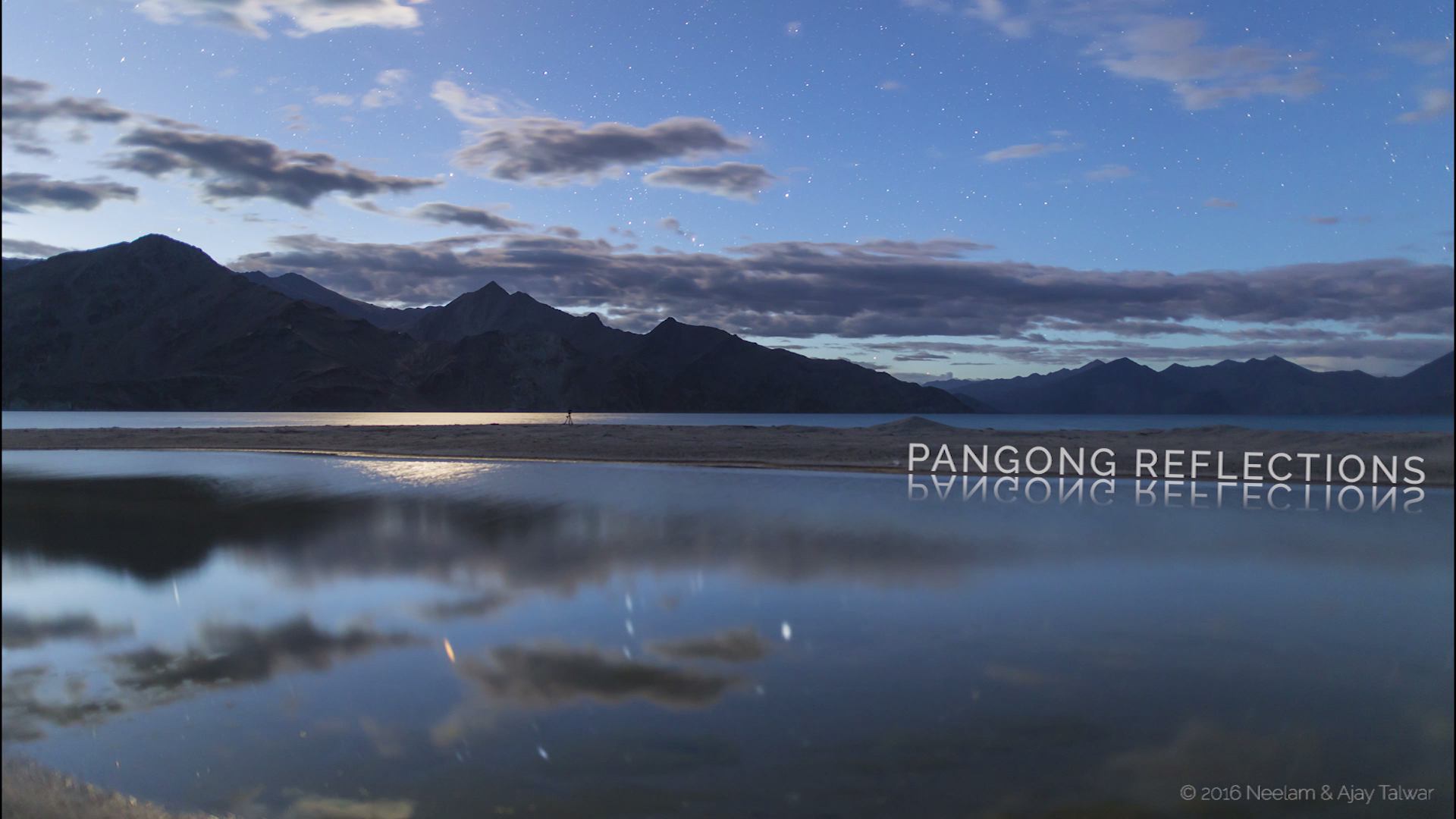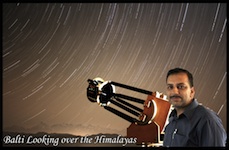GAM 2017 Blog
- Published: Wednesday, April 12 2017 00:00
By Ajay Talwar

No I am not talking about the thousand kilometres of azure coloured sea coast in the Mediterranean Turkey, but a small lakeside coastline in the Himalayas. The water’s wonderfully clear showing multi-coloured pebbles at the bottom. The water shows different shades of turquoise, aquamarine, cerulean and many other blue hues during the afternoon when the Sun is high. The water turns into brown hues reflecting the surrounding mountains in the evenings. You could spend an entire lazy day watching the Pangong Tso waters change colours by the hour.
 The brackish, salty Pangong is the highest lake in Ladakh, at a height of 4300 metres and is flanked by massive peaks over 6500m high. The lake is 150 km long, but only 4-5 km at its widest. It extends way into Tibet, in fact, only a quarter of the lake is in India.
The brackish, salty Pangong is the highest lake in Ladakh, at a height of 4300 metres and is flanked by massive peaks over 6500m high. The lake is 150 km long, but only 4-5 km at its widest. It extends way into Tibet, in fact, only a quarter of the lake is in India.
Last year in July I spent several days and nights on the banks of Pangong – a lake in two countries. At night this remote place changes into a star studded arena. You simply cannot imaging that the sky could be so chock full of stars. On a moonless night it seems like you can reach out and touch the Milky Way. As you walk on the sandy shore it seems as if the Milky Way at the zenith is casting a shadow walking along and accompanying below you on the sand.
 Normally visitors and tourists to Pangong just make a day trip, Leh- Pangong-Leh. Just about touch the lake at Lukung and head back to Leh. The visitors feel tremendously happy, having reached this remote, and scenic location after crossing a high mountain pass. Seems like a pity since the lake is much more than just a shore at Lukung. Some of the tourists make it further and spend a night at Spangmik or Mann in the seasonal tented camp-hotels at these places. Head further and you reach a village called Merak.
Normally visitors and tourists to Pangong just make a day trip, Leh- Pangong-Leh. Just about touch the lake at Lukung and head back to Leh. The visitors feel tremendously happy, having reached this remote, and scenic location after crossing a high mountain pass. Seems like a pity since the lake is much more than just a shore at Lukung. Some of the tourists make it further and spend a night at Spangmik or Mann in the seasonal tented camp-hotels at these places. Head further and you reach a village called Merak.

Merak is a beautiful oasis in a vast brownscape of Ladakh. The village is green with farming and square areas of forest plantations. Behind Merak you can see the Pangong range of mountains. The peaks are snow-capped all year round and feed the terrain with many streams. The streams are short and soon make it and feed the Pangong, but on the way sprouting a green oasis. Looking across the Pangong you can see mountains that lie in India and China. The Lake is divided in two countries.
 The Indian Institute of Astrophysics is well underway to install a solar telescope at this beautiful location of Merak. The upcoming telescope has been named ‘National Large Solar Telescope’ or NLST. There have been studies since several years to see if Merak is suitable for the Solar Telescope to be installed here. The site characterisation studies have found that Merak on the Pangong provides good number of sunshine hours with astronomical seeing. The seeing conditions are well suited for a large solar telescope. Plans are being made for a 2 metre solar telescope to be installed at a sandy peninsula jutting into the Pangong. When installed, this will probably be the largest solar telescope in the world. Currently there are couple of small telescopes installed at Merak peninsula, a bunker with computers, and a generator to run all the makeshift instruments.
The Indian Institute of Astrophysics is well underway to install a solar telescope at this beautiful location of Merak. The upcoming telescope has been named ‘National Large Solar Telescope’ or NLST. There have been studies since several years to see if Merak is suitable for the Solar Telescope to be installed here. The site characterisation studies have found that Merak on the Pangong provides good number of sunshine hours with astronomical seeing. The seeing conditions are well suited for a large solar telescope. Plans are being made for a 2 metre solar telescope to be installed at a sandy peninsula jutting into the Pangong. When installed, this will probably be the largest solar telescope in the world. Currently there are couple of small telescopes installed at Merak peninsula, a bunker with computers, and a generator to run all the makeshift instruments.
 During my visit to on the banks of Pangong Tso, I saw Andromeda galaxy rising from the hills plainly visible to the naked eye, billowing clouds, their moving shadows on the brownscape and the wind. Star studded night sky, bullet bikers on their personal epic ride of the life. Rdo Phungs or Tibetan Cairns in airy and sunny places, reflections of stars in the still waters of the lagoon beside the lake, the most perfect turquoise in the Pangong afternoon, beginnings of a grand solar observatory at Merak, the green oasis of Merak in the vast brownscape all around.
During my visit to on the banks of Pangong Tso, I saw Andromeda galaxy rising from the hills plainly visible to the naked eye, billowing clouds, their moving shadows on the brownscape and the wind. Star studded night sky, bullet bikers on their personal epic ride of the life. Rdo Phungs or Tibetan Cairns in airy and sunny places, reflections of stars in the still waters of the lagoon beside the lake, the most perfect turquoise in the Pangong afternoon, beginnings of a grand solar observatory at Merak, the green oasis of Merak in the vast brownscape all around.
At night I heard the roar of the Pangong waves beating against the stones. I also heard streams gently flowing from the melting snow and shortly meeting the lake waters, I saw numerous meteors, blaze across the sky, in their momentary brightness.

The movie can be seen at this link: https://vimeo.com/196929842
 Ajay Talwar took up astrophotography in 1987 during a night when the Moon was occulting the Pleiades. Since then he has continued photographing the skies passionately. He is the most prolific transient sky events photographer in India. One of his early accomplishments was to produce an exhibition of all Messier objects along with three other Indian astrophotographers. Ajay travels with all his astrophotography gear to all across India, especially the Himalayas, places like high altitude Indian Astronomical Observatory at Hanle, Ladakh, high peaks in Himachal Pradesh. His interest to dark skies also take him to the white desert in the northwestern India.
Ajay Talwar took up astrophotography in 1987 during a night when the Moon was occulting the Pleiades. Since then he has continued photographing the skies passionately. He is the most prolific transient sky events photographer in India. One of his early accomplishments was to produce an exhibition of all Messier objects along with three other Indian astrophotographers. Ajay travels with all his astrophotography gear to all across India, especially the Himalayas, places like high altitude Indian Astronomical Observatory at Hanle, Ladakh, high peaks in Himachal Pradesh. His interest to dark skies also take him to the white desert in the northwestern India.
Ajay Talwar regularly holds astrophotography workshops, including practical programs in the Himalayas where participants are provided necessary equipment to photograph the sky.
India is an enormous country of natural and cultural diversity. Through his TWAN contribution Ajay hopes to photograph many of India's heritage under the starry sky.
Ajay is blurring the sharp divide between scientific astrophotography and artistic photo-journalism. In 2011 he was invited to attend a month long residency by the Khoj International Artist’s Association. At the end of ‘Shifting Focus’ his work was exhibited at the Khoj Studios, New Delhi.








